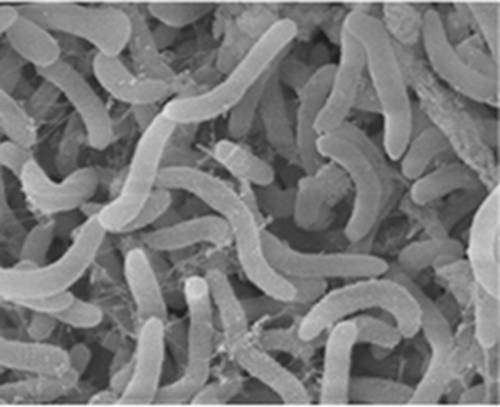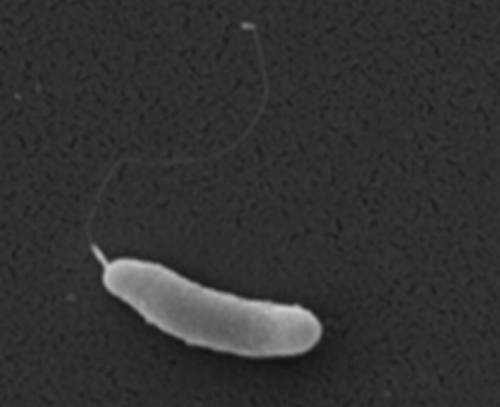
By R. Eric Collins, University of Alaska Fairbanks & University of Manitoba
As best we can tell, life on Earth originated in the ocean basins and evolved as microscopic bacteria, algae, protists, and viruses. Billions of years later, microbes are still running the show in the world’s seas. Every tablespoon of seawater contains about 10 million viruses, one million bacteria, 10,000 algae, and 1,000 protists. These microbes have long flourished in the oceans, taking advantage of every niche – they are active in frozen sea ice floating at the top of the Arctic Ocean, boiling hydrothermal vents in the deep sea, and everywhere in between. Together, all of the microbes in the sea (the majority of the plankton, along with tiny crustaceans like copepods) outweigh the swimming animals (or nekton) like fish and whales by six to one.
Microbes in the ocean are extremely diverse, with thousands of new species discovered every year. This diversity allows these organisms to adapt to ever-changing environments, and likewise, the dynamic nature of the ocean enables the high diversity found there to flourish. Mostly, marine microbiologists use DNA sequencing rather than microscopy to identify microbes in the ocean. Many microbes that look the same under the microscope actually have very different DNA signatures, or barcodes. We are now excited to venture into the Gulf of Alaska and around the seamounts to see if we can discover new microbes there!

G T G C C A G C A G C C G C G G T A A T A C G A A G G G A C C T A G C G T A G T T C G G A A T T A C T G G G C T T A A A G A G T T C G T A G G T G G T T G A A A A A G T T G G T G G T G A A A T C C C A G A G C T T A A C T C T G G A A C T G C C A T C A A A A C T T T T C A G C T A G A G T A T G A T A G A G G A A A G C A G A A T T T C T A G T G T A G A G G T G A A A T T C G T A G A T A T T A G A A A G A A T A C C A A T T G C G A A G G C A G C T T T C T G G A T C A T T A C T G A C A C T G A G G A A C G A A A G C A T G G G T A G C G A A G A G G A T T A G A A A C C C C C G T A G T C C G

G T G C C T T C G G G A A C T G T G A G A C A G G T G C T G C A T G G C T G T C G T C A G C T C G T G T T G T G A A A T G T T G G G T T A A G T C C C G T A A C G A G C G C A A C C C T T A T C C T T A C T T G C T A G C G G G T A A T G C C G A G A A C T T T A A G G A G A C T G C C G G T G A C A A A C C G G A G G A A G G T G G G G A C G A C G T C A A G T C A T C A T G G C C C T T A C G A G T A G G G C T A C A C A C G T G C T A C A A T G G C G T A T A C A G A G G G C T G C G A G C T A G C G A T A G T G A G C G A A T C C C A G A A A G T A C G T C G T A G T C C G G A T T G G A G T C T G C
If we try to compare the above photos, we see some similarities and some differences (can you find them?) but in general it would be difficult to consistently separate out these two microbes using the images alone. However, if we align their barcodes to each other and color the bases to see them more clearly, we see that there are many bases different between these two microbes, which makes them very easy to distinguish. We can distinguish millions of different kinds of microbes using this technique.

Barcode alignment and comparison. Image courtesy of the Gulf of Alaska Seamounts 2019 Expedition. Download image (jpg, 90 KB).
In the Gulf of Alaska, we expect to find several thousand different microbes, but we only know what a few of them do! A 2002 NOAA Office of Ocean Exploration and Research expedition to the Gulf of Alaska Seamounts found numerous octocorals, which were found to be habitats for microbes (Penn et al. 2006, https://aem.asm.org/content/aem/72/2/1680.full.pdf (PDF, 167 KB). ) at depths of 600-3,300 meters (2,000 to 10,000 feet). Many of the bacteria found in that study were involved in sulfur cycling and some were previously identified associated with deep-sea sediments and hydrothermal vents.

Benthic collage. Image courtesy of the Gulf of Alaska Seamounts 2019 Expedition. Download image (jpg, 54 KB).
The DNA sequencing techniques we use have come a long way since 2002, so instead of the 885 sequences that were recovered from the 2002 expedition, we expect to obtain at least 10,000 times more for the same price. This will allow us to gain a much better understanding of the microbiology of the Gulf of Alaska seamounts than has ever been possible before!